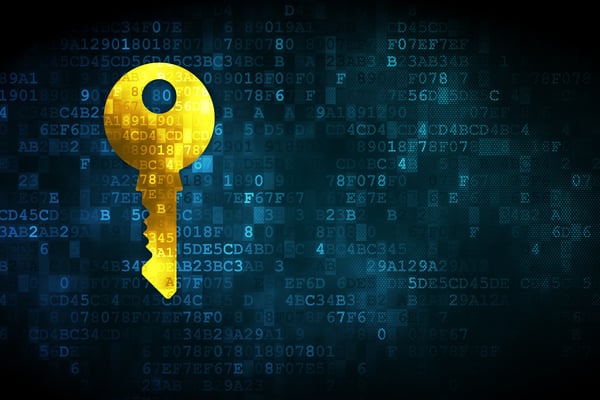![]() Your signature is required! You might be certifying that you’ve accepted the terms of a agreement, applying for a passport or giving your child permission to go on a field trip. Chances are you won’t be appearing in person, putting pen to paper and signing with a flourish. This blog post will explain when this type of signature is necessary, explore the types of electronic signatures that can replace it and explain when each one is used.
Your signature is required! You might be certifying that you’ve accepted the terms of a agreement, applying for a passport or giving your child permission to go on a field trip. Chances are you won’t be appearing in person, putting pen to paper and signing with a flourish. This blog post will explain when this type of signature is necessary, explore the types of electronic signatures that can replace it and explain when each one is used.
Table of Contents
- What is a wet signature?
- What are the downsides of collecting wet signatures?
- When is a wet signature required?
- Are wet signatures more secure than electronic signatures?
- What is an electronic signature?
- Benefits of using electronic signature
- How does DocuWare handle electronic signatures?
- How e-signatures can be combined with automated workflows
- US laws governing the use of electronic signatures
- Conclusion
What is a wet signature?

A wet signature can be scanned and emailed in electronic format. However, it requires security measures like a unique password and encryption during transmission to prove its integrity. In many jurisdictions, scanned wet signatures hold legal recognition when you take these security measures
What are the downsides of collecting wet signatures?
- All signers must be gathered in one place, or the document must be mailed or sent as an attachment in an email
- Documents signed on paper can be lost, misfiled or destroyed by a natural or manmade disaster
- They pose a security risk because they can be easily forged or altered
- There’s no visibility into the signature process to see whether the document has been received and signed
- Storing physical documents requires office space or off-site storage

When is a wet signature required?
While electronic signatures are accepted as legally valid in most cases, there are still certain situations including wills, trusts, adoptions, divorce proceedings, loans and mortgages where wet signatures may be necessary. Requirements will vary depending on the state or jurisdiction. If you’re concerned about the validity of an electronic signature in one of these situations, seek legal advice.Are wet signatures more secure than electronic signatures?
.jpg?width=600&height=400&name=Signing%20a%20contract%20on%20a%20tablet%20with%20a%20finger%20(1).jpg)
Electronic signatures, on the other hand, offer enhanced security features that make them less susceptible to forgery. When you sign a contract electronically, it is archived as a secure electronic record. This record often includes critical data such as the IP address of the signer, as well as the date and time the document was signed. These safeguards provide substantial evidence if the signature's validity is questioned.
What is an electronic signature?

Electronic signature is a general term that describes any signature that is electronically transmitted, whether it's written in person on a tablet, indicated by checking a box, delivered via a password protected stamp or provided by a service like DocuWare technology partners DocuSign or Validated ID that are also Trust Service Providers (TSP).
Benefits of using electronic signatures

They provide multiple methods to verify the identity of signers and control document access. This advanced verification process ensures that only authorized individuals can sign and view the documents, significantly enhancing both security and privacy.
Going digital also improves recordkeeping through more efficient tracking, comprehensive audit trails, secure storage and easy retrieval by authorized personnel. And enables collection of e-signatures from each stakeholder with one workflow

How does the customer experience differ between wet signatures and electronic signatures
Time savings
Wet signatures: Eagerness to sign may wane due to delays and inconvenience. Additional travel and logistical considerations for delivering documents can create further barriers.Electronic signatures: Signing documents online is almost instantaneous. Documents can be reviewed, signed, and returned in minutes. Users appreciate the simplicity and speed, resulting in a more positive experience overall.
Convenience
Wet signatures: Customers need to print documents, physically sign them, scan them and email them or send the document via overnight mail. This process can be inconvenient and expensive.Electronic signatures: The online process involves straightforward steps for reviewing and signing documents. Users appreciate the simplicity and speed, resulting in a more positive experience overall.
User experience
Wet signatures: Users may face barriers such as lacking the proper tools to print or scan documents or the cost of secure overnight delivery. This adds layers of complexity and potential frustration to the process.Electronic signatures: The online process typically involves straightforward steps for reviewing and signing documents. Users appreciate the simplicity and speed, often resulting in a more positive experience overall.
How does DocuWare handle electronic signatures?
![]()
Simple electronic signatures are often executed using stamps. For instance, you can use DocuWare stamps to apply a simple electronic signature for approving a document or acknowledging receipt. The DocuWare stamp can be password protected so that you are the only person who is authorized to apply it. It can also be customized to include your signature image within the stamp itself.
For more advanced and qualified electronic signatures, DocuWare collaborates with signature service providers such as Validated ID and DocuSign. The integration is smooth through signature service within the DocuWare workflow.
How electronic signatures can be combined with eforms and automated workflows
US laws governing the use of electronic signatures
.jpg?width=600&height=400&name=Businessman%20holding%20a%20computer%20tablet%20(1).jpg)
- A clear intent to sign by each party
- Consent to do business electronically
- A signature associated with the record and not stored separately
- A record that is archived and available to all signers
- An opt-out clause that enables the signers to request a paper contract
Be aware that other countries may have different laws regarding electronic signatures, so it is always best to check the local regulations before proceeding with a digital signature process.
Conclusion
Currently, while most transactions can be completed electronically, the use of electronic signatures is lagging behind. This hesitation may stem from doubts about the legal validity of e-signatures, security concerns or the tendency to do things the way you’ve always done them.In practice, electronic signatures offer a significant advantage over traditional handwritten signatures by validating document integrity, improving your company’s relationships customers, service providers and vendors, and lowering costs through faster more efficient workflows. They are more secure and legally enforceable in most cases. Additionally, digital signatures can help your organization meet compliance requirements -- whether state, federal, industry-related, or international -- regarding the security and protection of private data.
If you’d like to see DocuWare’s electronic signature capabilities in action request a demo.

.jpg)
